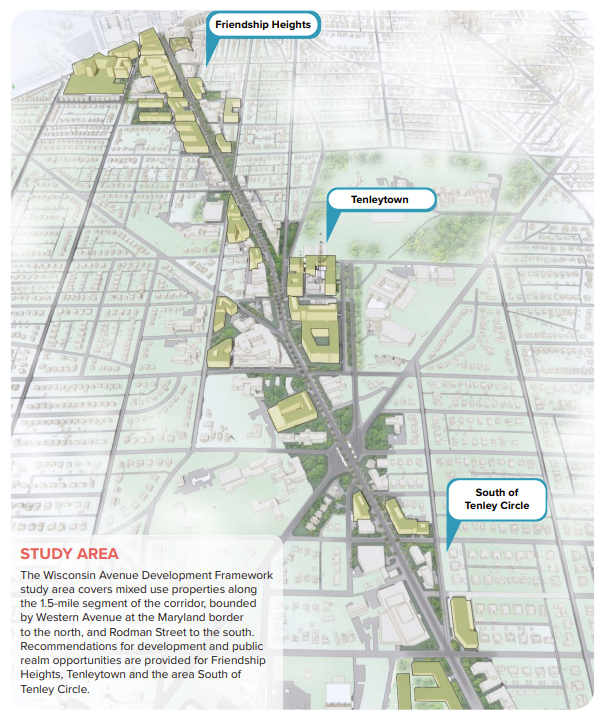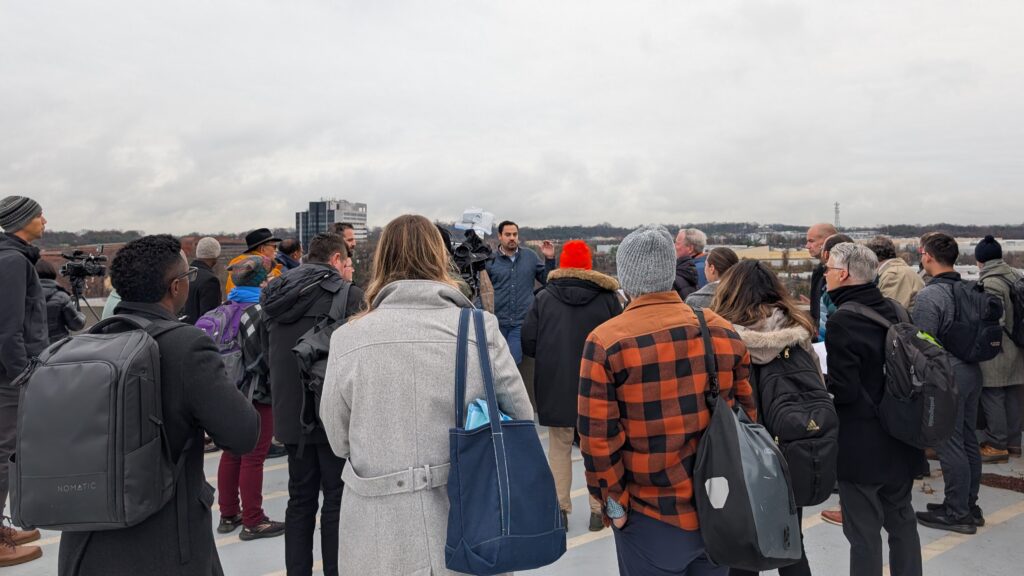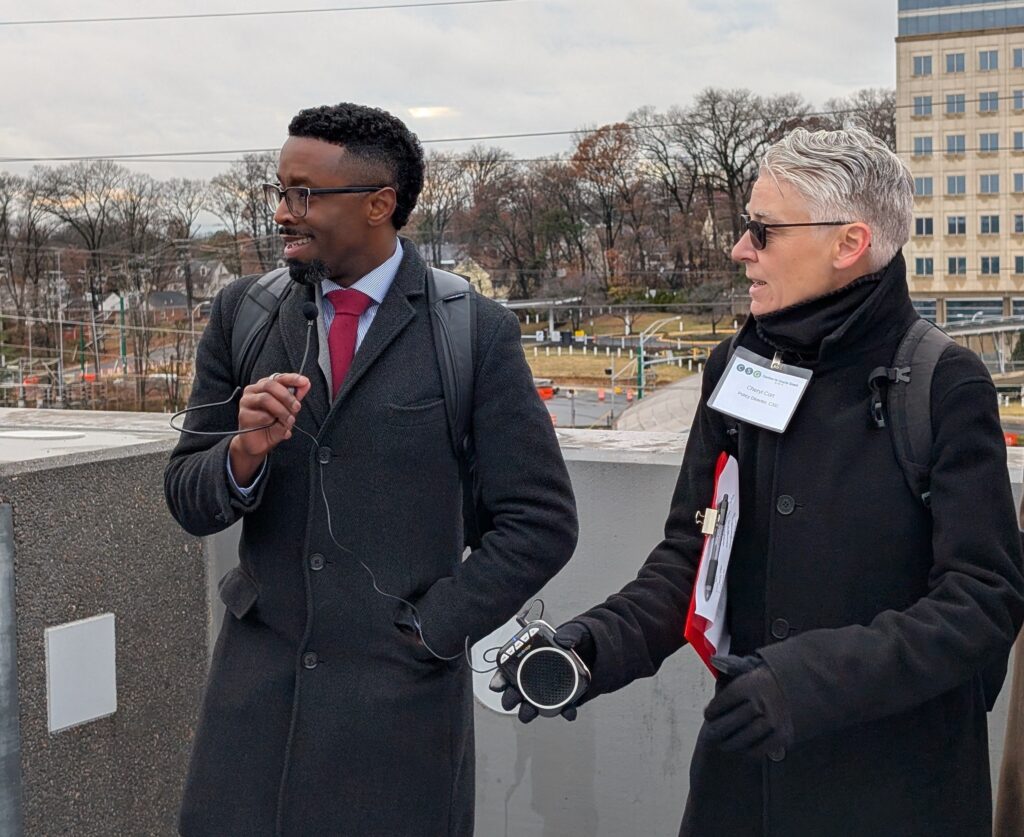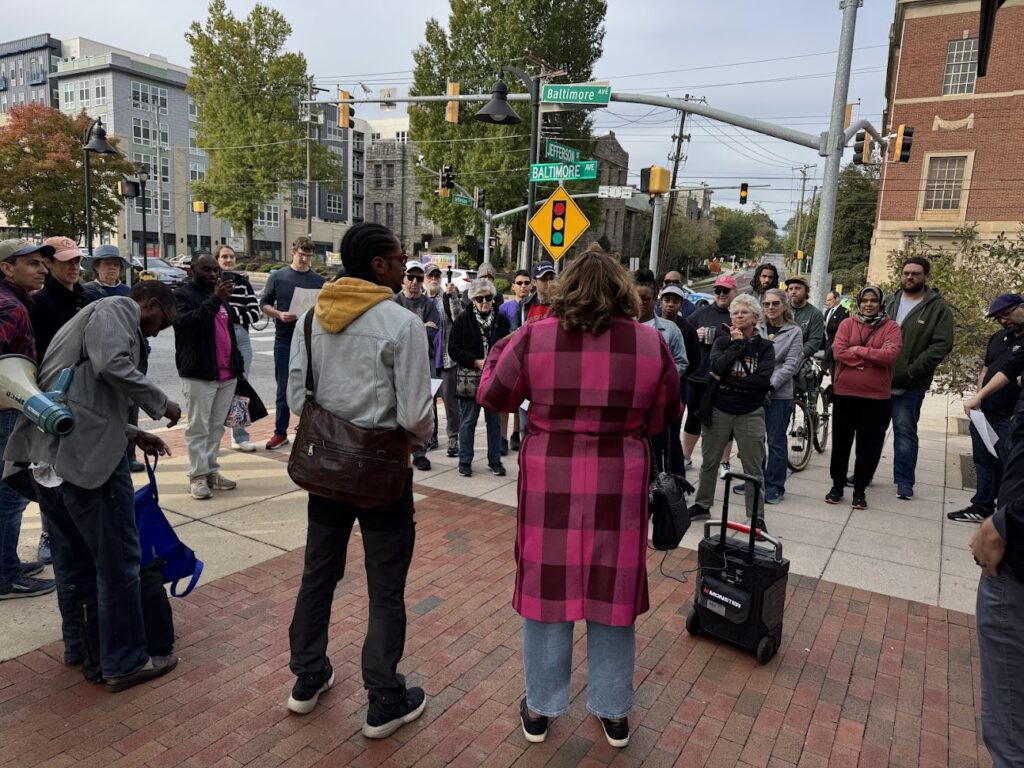On December 11, 2025, the DC Zoning Commission will consider a major upzoning for the upper Wisconsin Avenue corridor near the Friendship Heights and Tenleytown Metro stations (Zoning Case 25-13) which could bring thousands of much-needed homes to this high opportunity area.
Voice your support for a more inclusive Ward 3! The opponents are coming out strongly against it – so we need you to step up! Here’s how:
- Send a letter of support by December 10 — click below & personalize it!
- Sign up to testify virtually on 12/11, 4 pm. Live, virtual testimony at the Zoning Commission is crucial to countering the number of forceful opponents we expect. Sign up & get tips on testifying here. Or ask us! Cheryl@smartergrowth.net.
The upper Wisconsin Avenue Corridor with two Metro stations and many local services is the perfect place to provide the housing our city needs.

Image source: DC Office of Planning
Want more background on the Wisconsin Av. rezoning? Check out our explainer here.




